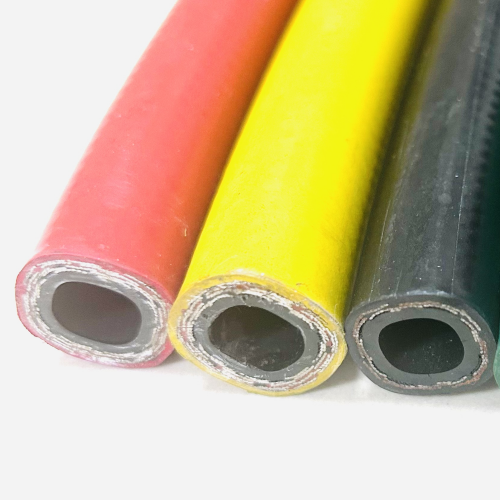8 月 . 16, 2024 11:06 Back to list
Hydraulic Hose Manufacturers Specializing in SAE 100R2AT High Performance Solutions for Industrial Applications
Understanding SAE 100R2AT Hydraulic Hose Manufacturers
Hydraulic hoses are crucial components in various industrial applications, and among them, the SAE 100R2AT hydraulic hose stands out for its robustness and reliability. This article delves into the significance of SAE 100R2AT hydraulic hoses, the manufacturing process, and what to look for when choosing a manufacturer.
Overview of SAE 100R2AT Hydraulic Hoses
The SAE 100R2AT specification outlines high-pressure hydraulic hoses constructed with two braids of steel wire reinforcement. This design enables these hoses to withstand significant pressure levels, often up to 4000 psi depending on the diameter. These hoses are primarily recommended for medium to high-pressure systems, making them suitable for a wide array of applications, including construction, agriculture, and mining equipment.
The construction of SAE 100R2AT hoses typically includes layers that enhance flexibility, durability, and resistance to environmental factors. The inner tube is crafted from oil-resistant synthetic rubber, while the outer cover provides further protection against abrasion, ozone, and weather conditions. Such features mean these hoses can function efficiently in demanding environments where failure is not an option.
The Manufacturing Process
The manufacturing of SAE 100R2AT hydraulic hoses involves several systematic steps that ensure the product meets industry standards.
1. Material Selection The process begins with sourcing high-quality raw materials. Manufacturers typically focus on superior grades of synthetic rubber for the inner tube and robust steel wires for reinforcement.
2. Wire Braiding The steel wires are braided together to form a strong structure. This braiding process is critical because it determines the hose's flexibility and its ability to withstand internal pressures.
3. Extrusion The rubber compounds are then extruded into the desired hose shape. This step involves precision to ensure consistent thickness and quality throughout the hose.
4. Assembly Once the hose body is formed, it undergoes assembly, where fittings and end connectors are attached. This step is crucial as it determines how well the hose integrates with other hydraulic components.
sae100r2at hydraulic hose manufacturers

5. Testing and Quality Control Manufacturers conduct comprehensive testing to ensure each hose meets the SAE 100R2AT specifications. Tests may include burst pressure tests, impulse tests, and inspections for flaws or inconsistencies.
6. Certification Upon passing quality checks, the product is certified. Manufacturers should provide documentation showing adherence to industry standards, which is critical for end users.
Choosing a Manufacturer
When selecting a manufacturer for SAE 100R2AT hydraulic hoses, several factors should be considered
- Reputation Look for manufacturers with a solid reputation in the industry. Reviews and testimonials from past customers can provide insights into their reliability and quality.
- Compliance Ensure the manufacturer complies with industry standards and certifications. This is vital to guarantee that the products are safe and effective for high-pressure applications.
- Customization Options Some projects may require custom hoses tailored to specific requirements. Evaluate whether the manufacturer offers customization in lengths, diameters, fittings, and materials.
- Customer Service A manufacturer with excellent customer service can significantly enhance your purchasing experience. They should provide knowledgeable support and assistance throughout the ordering process.
- Pricing While cost should not be the only determining factor, it is still an essential aspect. Compare prices among manufacturers while considering quality and service to ensure you get value for your investment.
Conclusion
SAE 100R2AT hydraulic hoses are pivotal in many industrial applications, and choosing the right manufacturer is essential for ensuring performance and longevity. By understanding the manufacturing process and considering critical selection criteria, businesses can make informed decisions that lead to successful operations. As the demand for hydraulic systems grows, the focus on quality and reliability will undoubtedly remain a top priority for manufacturers and users alike.
-
EN857 2SC Hydraulic Hose Suppliers OEM & China Manufacturers
NewsMay.30,2025
-
51mm Hydraulic Hose Manufacturer China OEM Durable & Custom Solutions
NewsMay.30,2025
-
OEM Rubber Air Hose Supplier Durable Custom Solutions
NewsMay.29,2025
-
High-Pressure Wrapped Cover Steel Wire Spiral Hydraulic Hose Supplier
NewsMay.29,2025
-
Rubber water suction and discharge hose
NewsMar.07,2025
-
SAE 100 R6/EN 854 R6 Fibre Braided Oil Hose
NewsMar.07,2025



